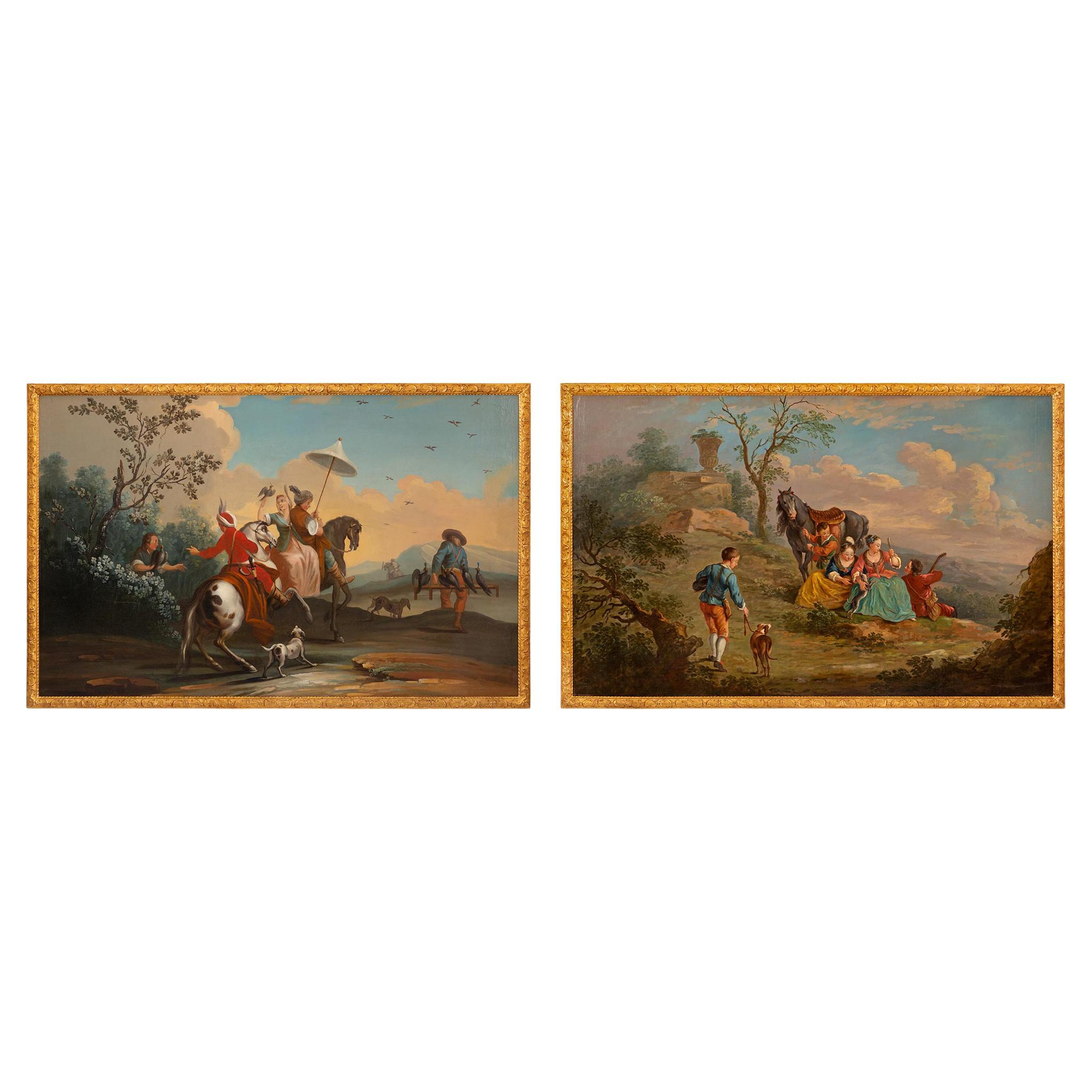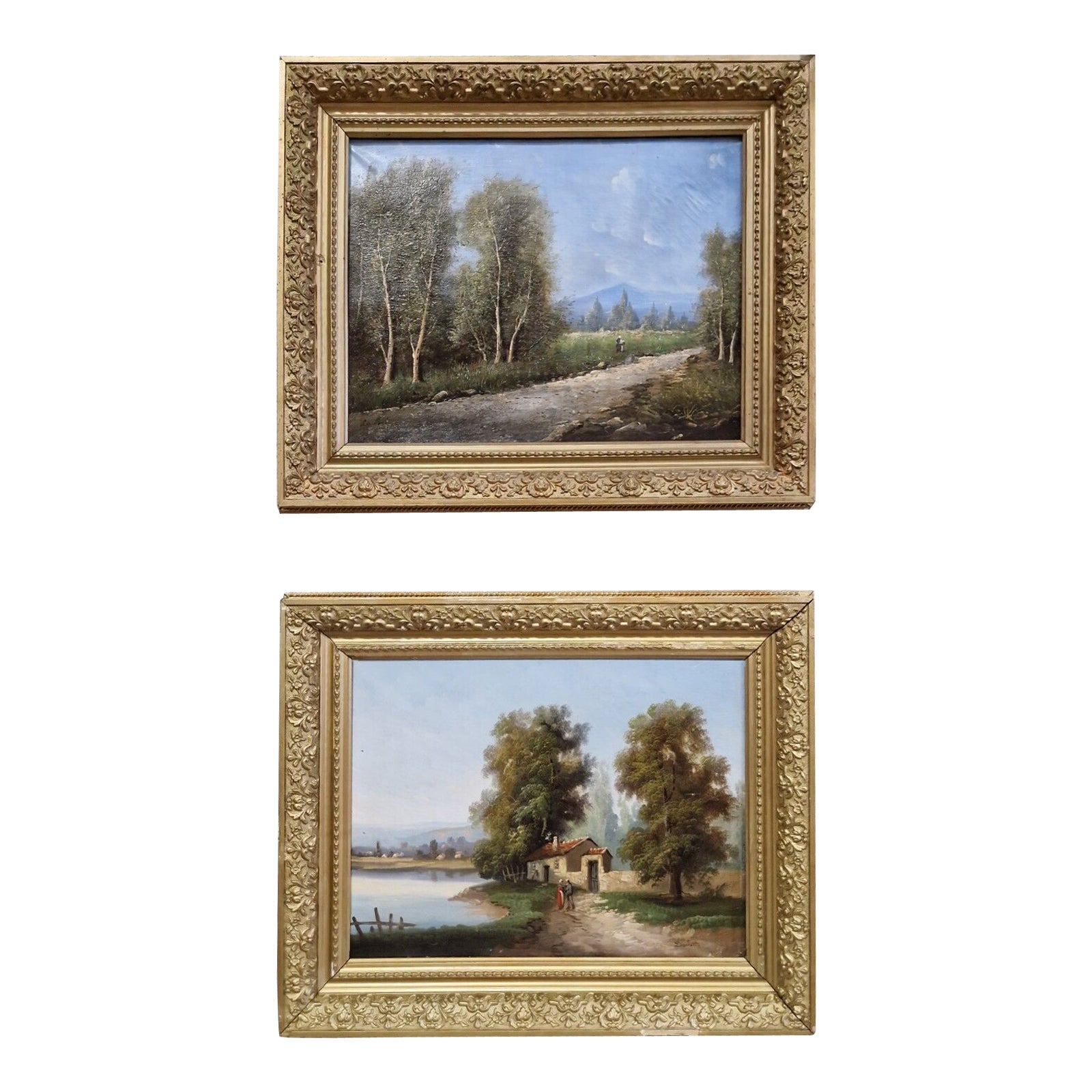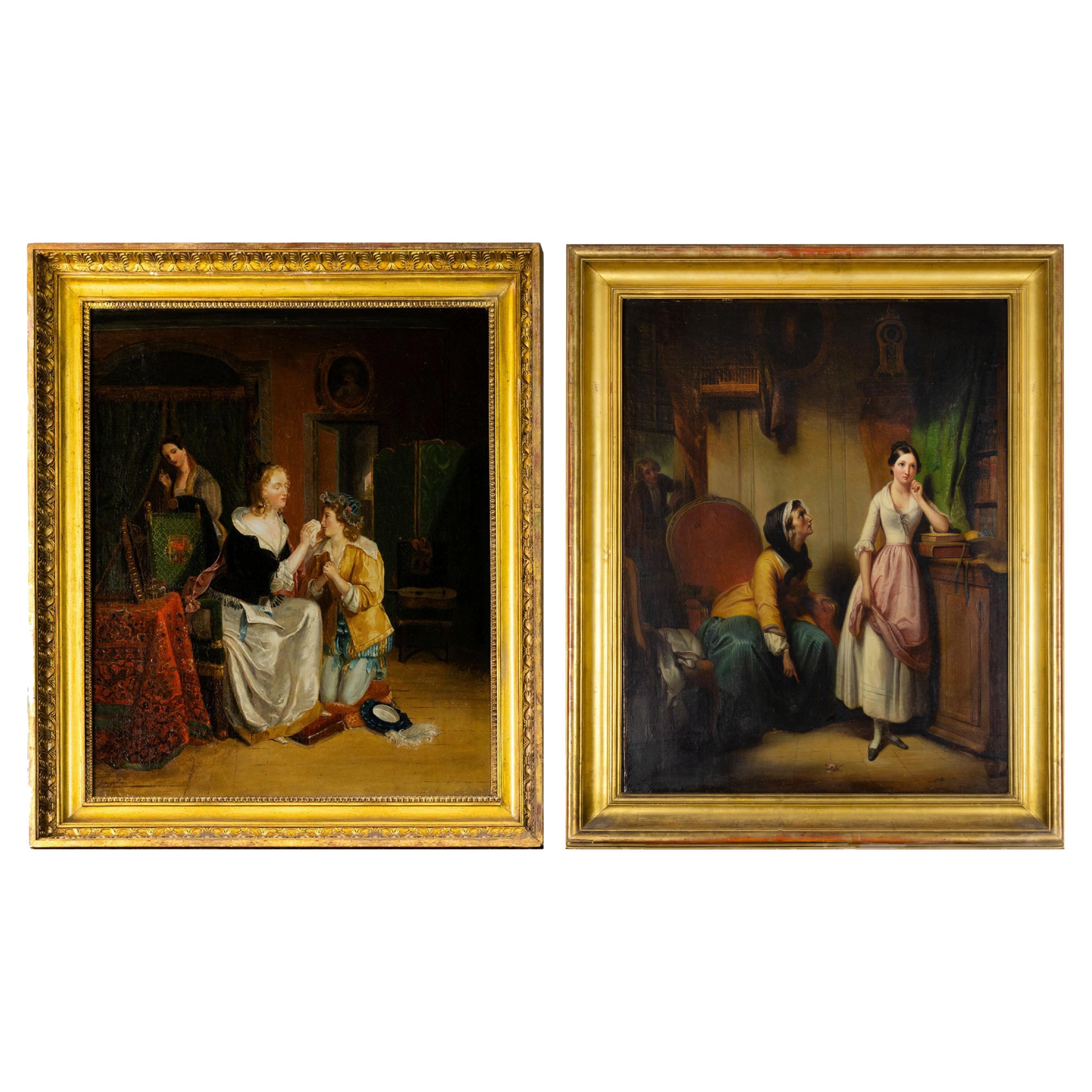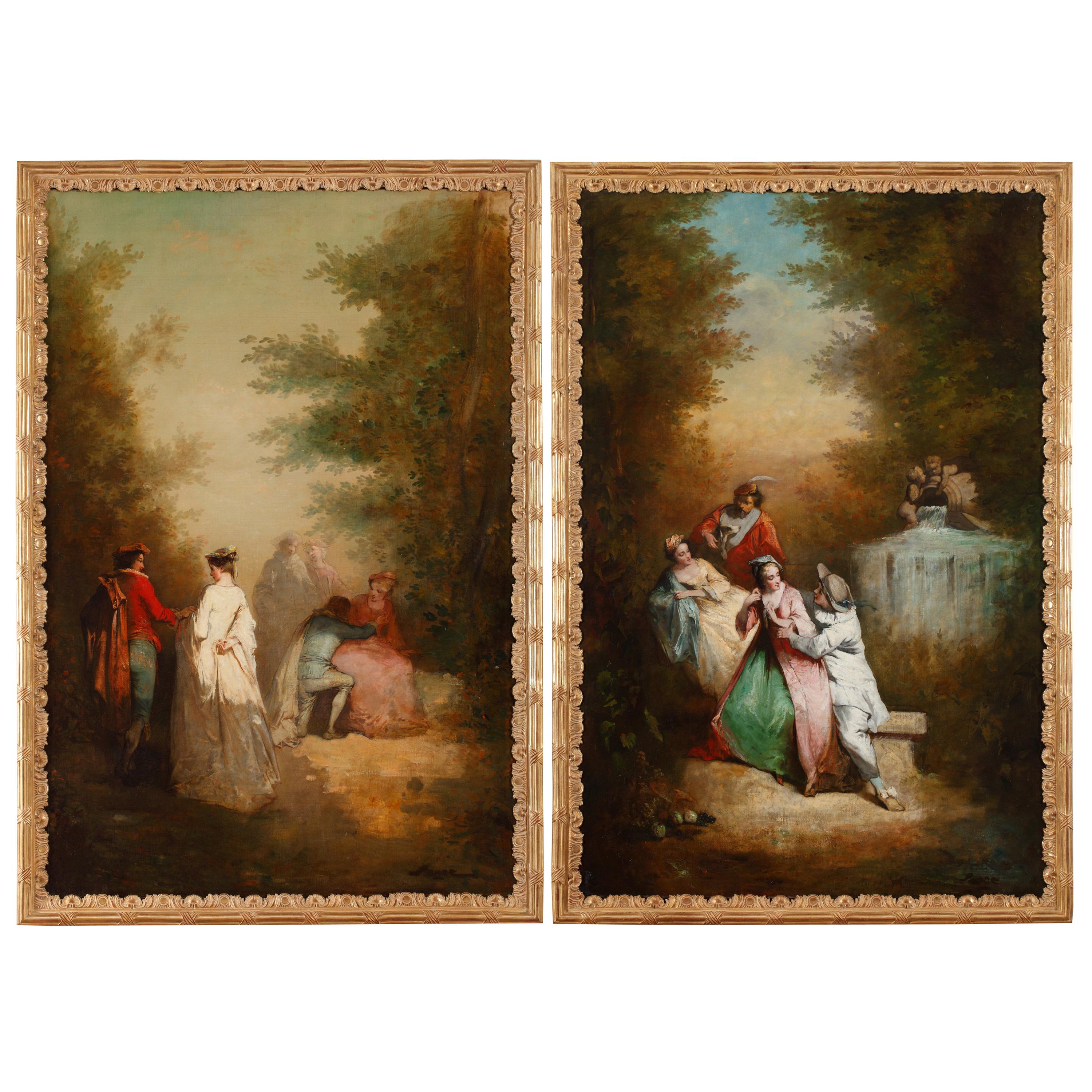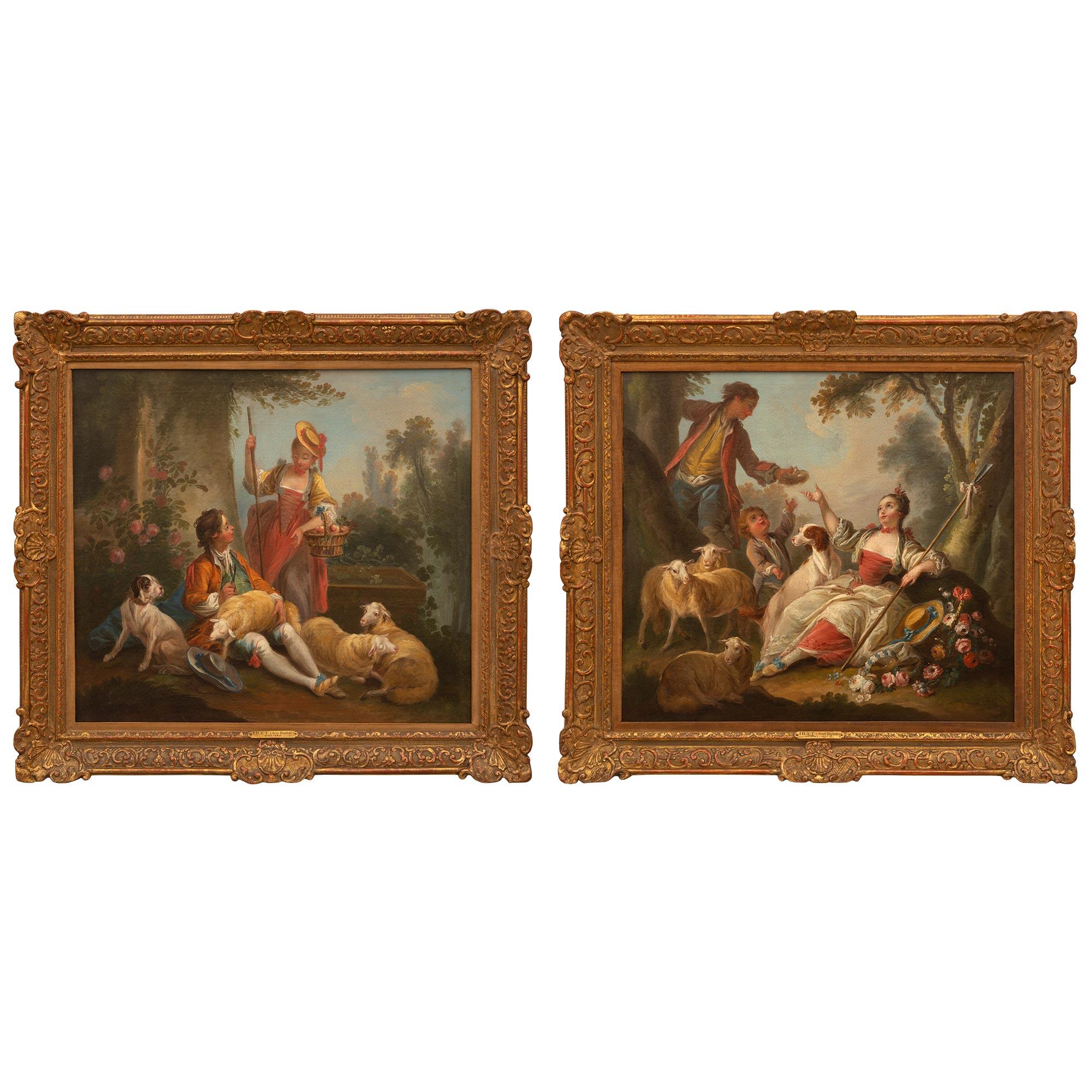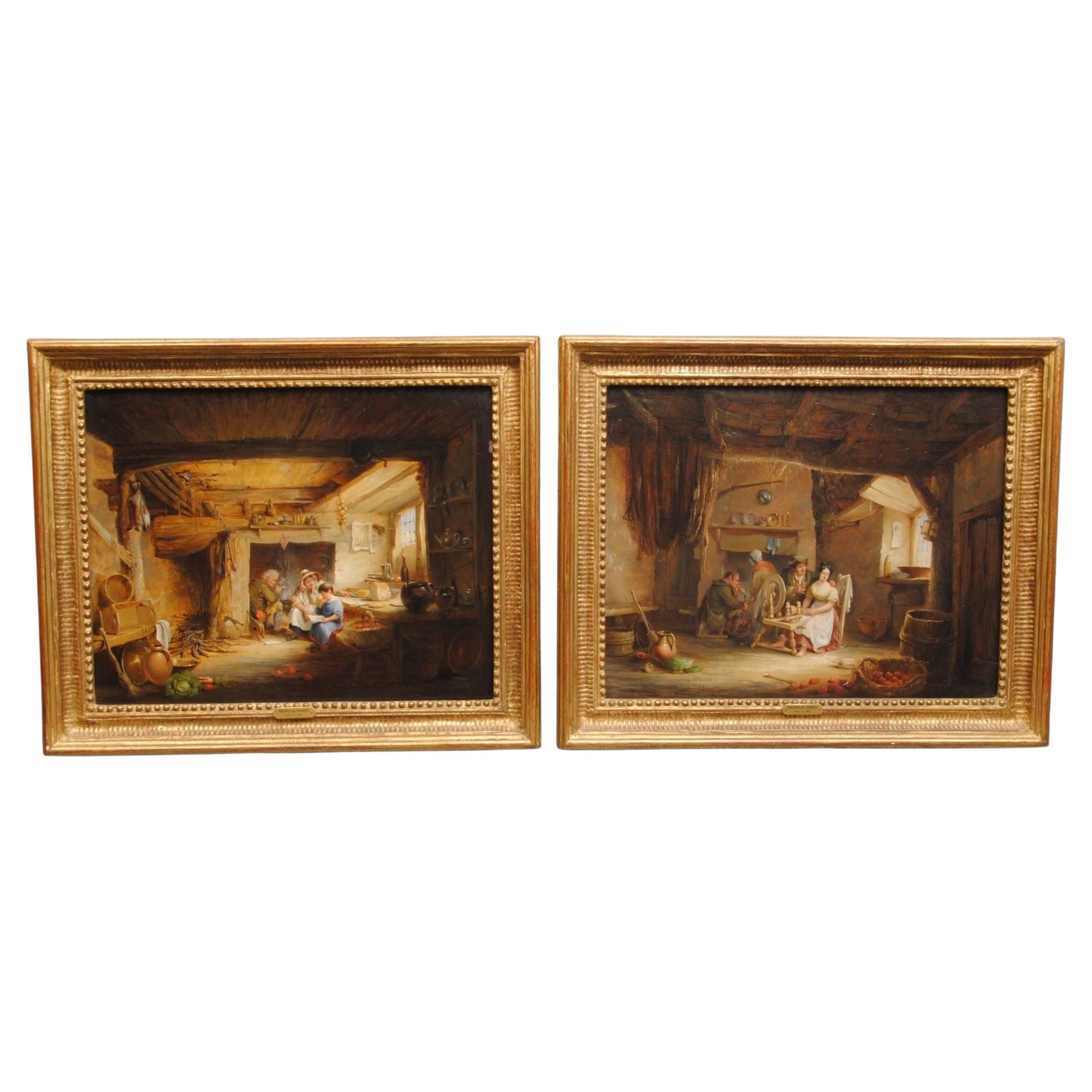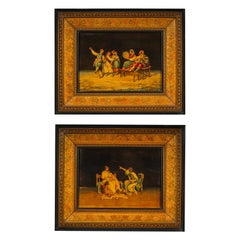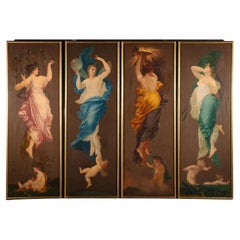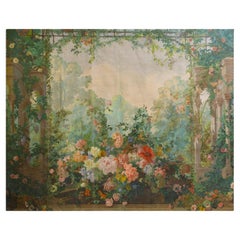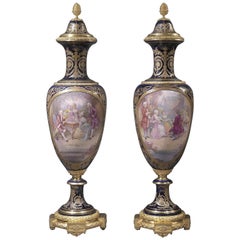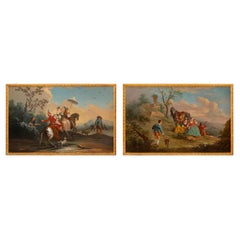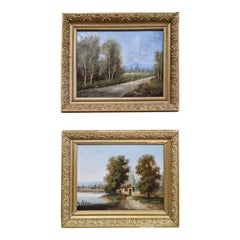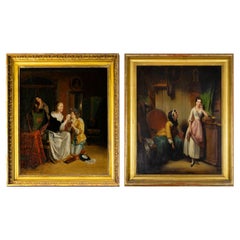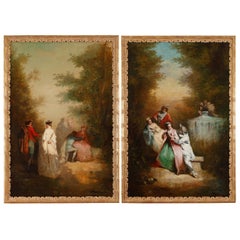Items Similar to Pair of Paintings by Francesco Peluso
Want more images or videos?
Request additional images or videos from the seller
1 of 6
Pair of Paintings by Francesco Peluso
$7,605.19per set
£5,500per set
€6,479.67per set
CA$10,537.37per set
A$11,434.66per set
CHF 6,059.36per set
MX$140,240.49per set
NOK 74,984.15per set
SEK 70,856.05per set
DKK 48,373.96per set
About the Item
A pair of paintings by Francesco Peluso (1836-1916): 'Neapolitan Promenade’ and ‘Pastoral Promenade’.
Oil on canvas.
Signed 'F Peluso' to the lower left of each canvas.
Francesco Peluso was born in Naples in 1836. His work was particularly admired for his inventive genre scenes in the 18th century style.
Italian, circa 1900.
- Creator:Francesco Peluso (Artist)
- Dimensions:Height: 29.93 in (76 cm)Width: 40.56 in (103 cm)Depth: 3.55 in (9 cm)
- Sold As:Set of 2
- Materials and Techniques:
- Place of Origin:
- Period:
- Date of Manufacture:circa 1900
- Condition:Wear consistent with age and use.
- Seller Location:Brighton, GB
- Reference Number:Seller: B690511stDibs: LU1028020085572
About the Seller
5.0
Recognized Seller
These prestigious sellers are industry leaders and represent the highest echelon for item quality and design.
Established in 1964
1stDibs seller since 2014
58 sales on 1stDibs
Typical response time: 3 hours
Associations
The British Antique Dealers' AssociationLAPADA - The Association of Arts & Antiques Dealers
- ShippingRetrieving quote...Shipping from: Brighton, United Kingdom
- Return Policy
Authenticity Guarantee
In the unlikely event there’s an issue with an item’s authenticity, contact us within 1 year for a full refund. DetailsMoney-Back Guarantee
If your item is not as described, is damaged in transit, or does not arrive, contact us within 7 days for a full refund. Details24-Hour Cancellation
You have a 24-hour grace period in which to reconsider your purchase, with no questions asked.Vetted Professional Sellers
Our world-class sellers must adhere to strict standards for service and quality, maintaining the integrity of our listings.Price-Match Guarantee
If you find that a seller listed the same item for a lower price elsewhere, we’ll match it.Trusted Global Delivery
Our best-in-class carrier network provides specialized shipping options worldwide, including custom delivery.More From This Seller
View AllA Pair Of ‘Sorrento’ Stained Olive and Fruit Wood Pictures By Michele Grandville
Located in Brighton, West Sussex
A Pair Of ‘Sorrento’ Stained Olive and Fruit Wood Pictures By Michele Grandville (Italian, 1821-1893).
Depicting ‘Roman Tarantella Dancers’ and ‘A Pompeian Harp Recital’, each with ...
Category
Antique 19th Century Italian Decorative Art
Materials
Straw, Fruitwood, Olive
'Les Quatre Eléments' by Pierre Victor Galland
Located in Brighton, West Sussex
Pierre-Victor GALLAND (1822-1892)
‘Les Quatre Eléments’
Four, oil on canvas.
France, Circa 1873.
Each painting depicting one of the cardinal elements personified as a female figure in the presence of its most evident attribute. Painted with strong light and colour.
Earth panel depicts one of the four elements in a compelling fashion with an ascendent female figure robed in flowing drapery with foot and arm extended reaching skyward: each with attendant putti below.
Earth is shown swathed in robes of greens and white, with a fanciful foliate headdress of lush leaves and bullrushes.
Air leaps effortlessly into the sky draped in blush pink and holding a slender fruiting bough.
Fire ascends dramatically into the sky holding forth a flaming torch and draped in bright burnished orange and grey, her image seemingly lit from a fire kindled below by an ignipotent putto.
Water suitably draped in billowing azure blue with a translucent undergarment, holds aloft a bubble representing water is portrayed with shimmering translucent wings, an attendant winged putto pulling at her hem.
Under the Second Empire, Haussmann’s transformation of Paris went hand in hand with the construction of luxurious mansions for the new haute bourgeois. Gallards extensive work for wealthy patrons such as Lionel de Rothschild and Edouard André, led him to become one of Paris’s most admired and sought-after decorative artists. His fame quickly spread and led him to carry out projects outside the capital for, among others, Baron von Derwies in Nice, Prince Narischkine in Saint Petersburg and William Vanderbilt in the United States.
Literature
Pierre-Victor Galland, Un Tiepolo français au XIXe siècle. Published in 2006, Somogy, Piscine-musée d'art et d'industrie André Diligent, Musée départemental de l'Oise (Paris, Roubaix, Beauvais). ISBN 978-2-7572-0027-8. (in French)
Materials
Oil on Canvas
Provenance
Acquired in France with four other panels (The Four Seasons), at the end of the 19th century by Herman Ossian Armour (1837-1901), businessman, and founder of the Armour Meat Company and American humanist. He brought them back to his USA residence at Fifth Avenue, New York
Bequeathed to Mary Armour...
Category
Antique 19th Century French Neoclassical Paintings
Materials
Canvas
'Le Jardin d'Armide' - A Rare Wallpaper Panel by Desfossé
Located in Brighton, West Sussex
'Le Jardin d'Armide' (‘The Garden of Armida’)
A Rare Wallpaper Panel Designed By Édouard Muller (1823 - 1876) and Manufactured By Jules Desfossé.
Woodblock hand printed and polychr...
Category
Antique 19th Century French Belle Époque Wallpaper
Materials
Canvas, Paper
Pair of Exhibition Quality Sèvres-Style Porcelain Vases
Located in Brighton, West Sussex
An exceptional and important pair of exhibition quality gilt bronze mounted Sèvres-style porcelain vases and covers.
Signed ‘Lucot’.
This exceptional pair of vases are of inver...
Category
Antique 19th Century French Vases
Materials
Ormolu
Pair of Sèvres Style Oval Porcelain Dishes Mounted as Appliques
By Manufacture Nationale de Sèvres
Located in Brighton, West Sussex
A Pair of Sèvres Style Oval Porcelain Dishes Mounted as Appliques.
The reverse with spurious Chateau des Tuileries marks and S.37 stamp in blue Sèvres 1844'.
Each oval porcel...
Category
Early 20th Century French Wall Lights and Sconces
Materials
Porcelain
'Erblüth' a Large 19th Century Berlin 'KPM' Porcelain Plaque
By Königliche Porzellan-Manufaktur (KPM)
Located in Brighton, West Sussex
'Erblüth' a large and very fine Berlin (KPM) Porcelain plaque, after Angelo Asti. In a giltwood and composition shadow box frame.
Signed 'Weigel', impr...
Category
Antique 19th Century German Paintings
Materials
Porcelain, Giltwood
You May Also Like
Pair of Continental 19th Century Oil on Canvas Paintings
Located in West Palm Beach, FL
A striking and most charming pair of continental 19th century oil on canvas paintings. Each beautiful painting is set within its original giltwood frame with finely carved wrap aroun...
Category
Antique 19th Century Unknown Paintings
Materials
Canvas, Giltwood
Pair of Antique Oil Paintings 19th Century Signed Lambert
Located in Buxton, GB
This stunning pair of antique oil paintings is an incredible example of traditional French art, signed by the renowned artist Lambert. The medium-siz...
Category
Antique 19th Century French Neoclassical Paintings
Materials
Canvas, Paint
$940 Sale Price
65% Off
Pair Of Baroque Paintings, Augustin Franquelin, Emile Destouches
Located in Lisbon, PT
- An amazing Baroque Period painting named "La Fille Grondé'' (Disobedient daughter) by the renowned painter Paul Emile Destouches (1794-1874). It depicts a family scene with the be...
Category
Antique 19th Century French Baroque Paintings
Materials
Canvas, Wood
$9,682 Sale Price / set
41% Off
Paintings "Courtly Love" and "Inconstant Love", French School, Late 19th Century
By Jean-Antoine Watteau
Located in PARIS, FR
Measurements with frames: Height 135 cm (53 in.), width 94 cm (37 in.)
Magnificent pair of important paintings on the theme of “Fêtes galantes” and so dedicated to the art of sedu...
Category
Antique Late 19th Century French Paintings
Materials
Canvas
$30,639 Sale Price / set
33% Off
Pair of French 19th Century Oil on Canvas Paintings
Located in West Palm Beach, FL
A stunning pair of French 19th century oil on canvas paintings attributed to Jean-Baptiste Huet. Each painting is set within its origi...
Category
Antique 19th Century French Paintings
Materials
Canvas, Wood
$64,500 / set
Pair of Oil on Panel of Interiors by Nicholas Condy
Located in Lincolnshire, GB
A charming pair of finely detailed interior cottage scenes, oil on panel by Nicholas Condy 1793 to 1857.
London Gallery label on the back
Condy started painting these fine interior s...
Category
Antique Early 19th Century English Paintings
Materials
Wood
More Ways To Browse
Andre Margat
Antique Catholic Painting
Balinese Painting Bali
Cowboy Western Furniture
Cuzco School Painting
Donald K Ryan
Federico Barocci
Franz Kline Canvas
French Country Painting Framed
Grisaille Panel
Japanese Scroll Kano
John Mackay
Kaufmann Karl
Margaret French
Mattia Preti
Nicolas Lancret
Oil Painting Moorish
Oil Paintings 1939 German
